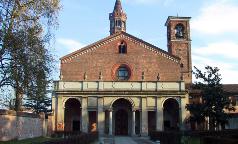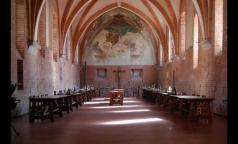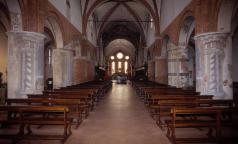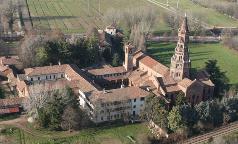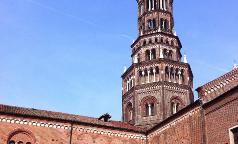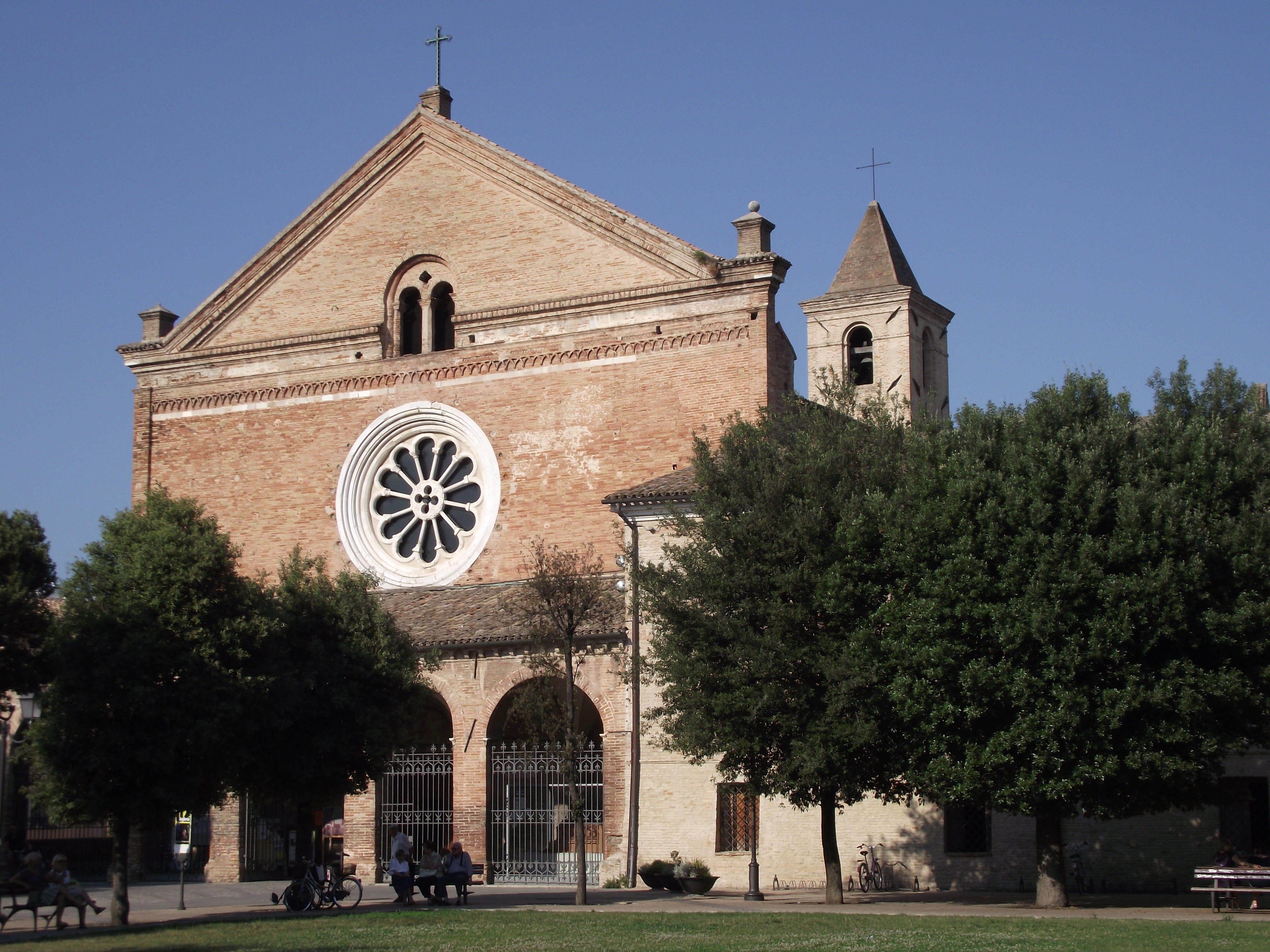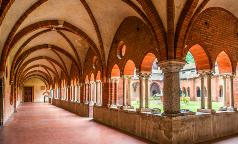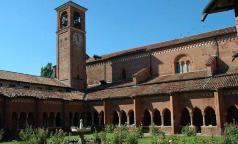Abbazia di Chiaravalle
Tel: 02 57403404 (Informazioni e prenotazione visite di gruppi)
Fax: 02 53935444
Opening hours
09.00>12.00 - 14.30>17.30
Sun and Hol 14.30>17.30
closed on Mon
Guided tours on Sat and Sun. Info on the web site
Completely accessible to the disabled
History
The founder of the Abbey was Bernard of Clairvaux (1135), who transformed the marshy land donated to him by the Municipality into a prayer and work centre, which later became a flourishing farming centre. The Bergognone Cistercian model (Latin cross layout, rectangular choir and transept with chapel) adopted for the church (1150-1160 - consecrated in 1221) is mediated by Lombard applications (the use of fired brick, interior round arches on low cylindrical base pillars). The progressive abandonment of the essentialism imposed by Saint Bernard is evident in the imposing Campanaria tower (1347-49 which is perhaps the work of Pecorari) and the rich series of fourteenth century paintings. The frescoes by Bernardino Luini and the brothers Giovanni Battista and Giovanni Mauro Della Rovere date back to the 16th-17th centuries, while the portico is added during the first half of the 17th century. In 1798 decadence and abandonment came about. Only in 1894 the restoration work is said to have commenced, it continued immediately after the return of the Cistercians (1952).
Details
art period: from antiquity to romanesque
architect: Francesco Pecorari (prima metà sec. XIV)
architect: Luca Beltrami (1854-1933)
architect: Gaetano Moretti (1860-1938)
architect: Ferdinando Reggiori (1898-1976)
Notes
The Cistercian order was founded in 1098, in Citeaux in Burgundy, when Robert of Molesme desired to restore the Benedictine rule to the simplicity of its origins. Two of their most important abbeys are found in the Milan area: Morimondo and Chiaravalle. Cistercian architecture is based on St. Bernard's so-called "pilot project". A modular-type structure is created according to precise rules, which firmly establish the proportions of the ecclesiastical building and the layout of the various components of the complex. The demands of poverty, moreover, denied the possibility of adding any decorative elements.





